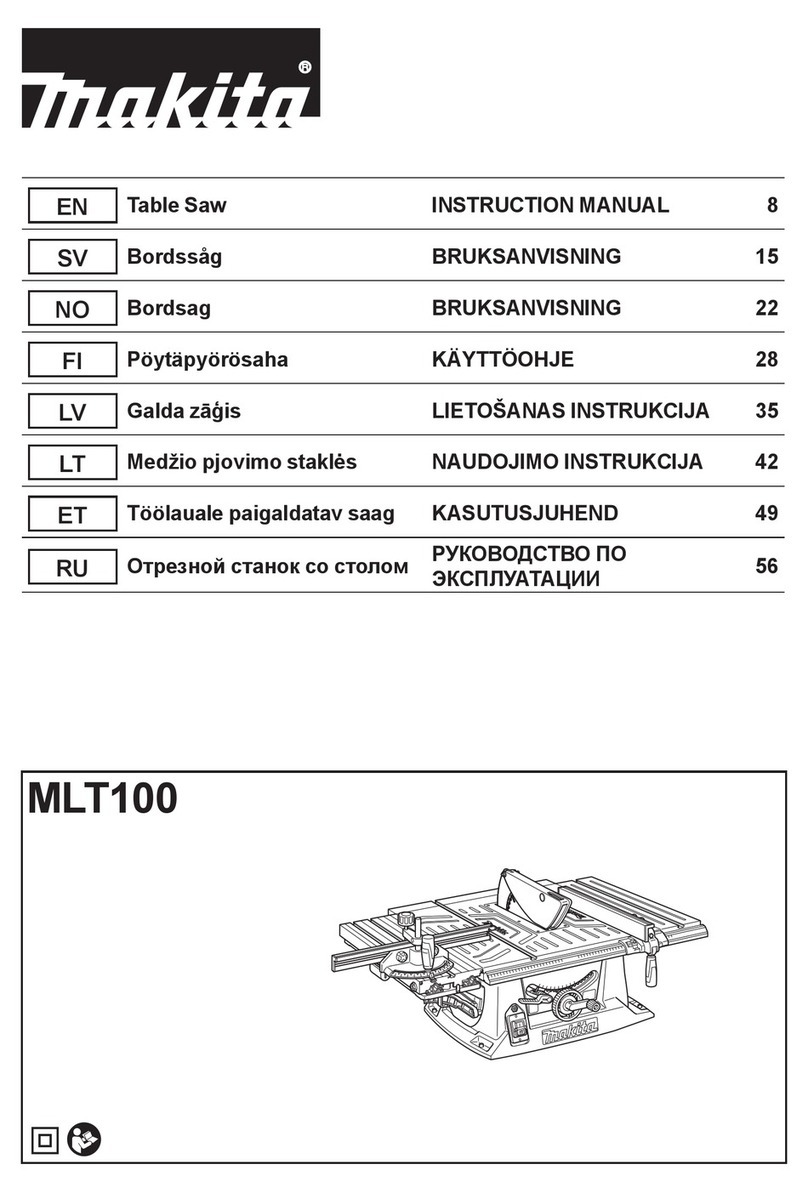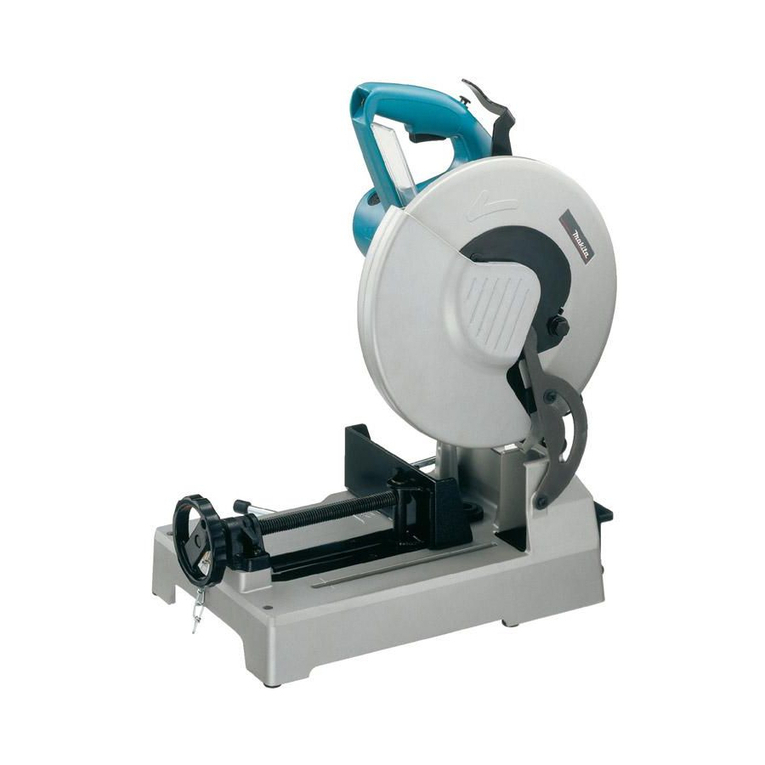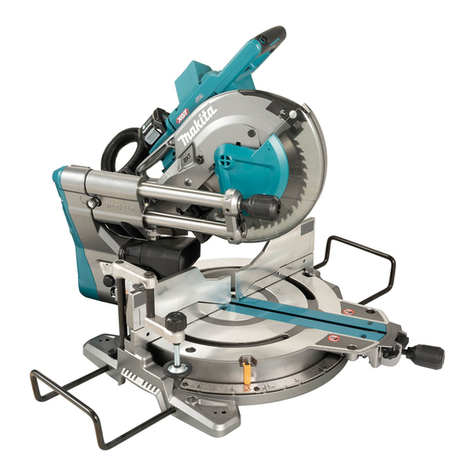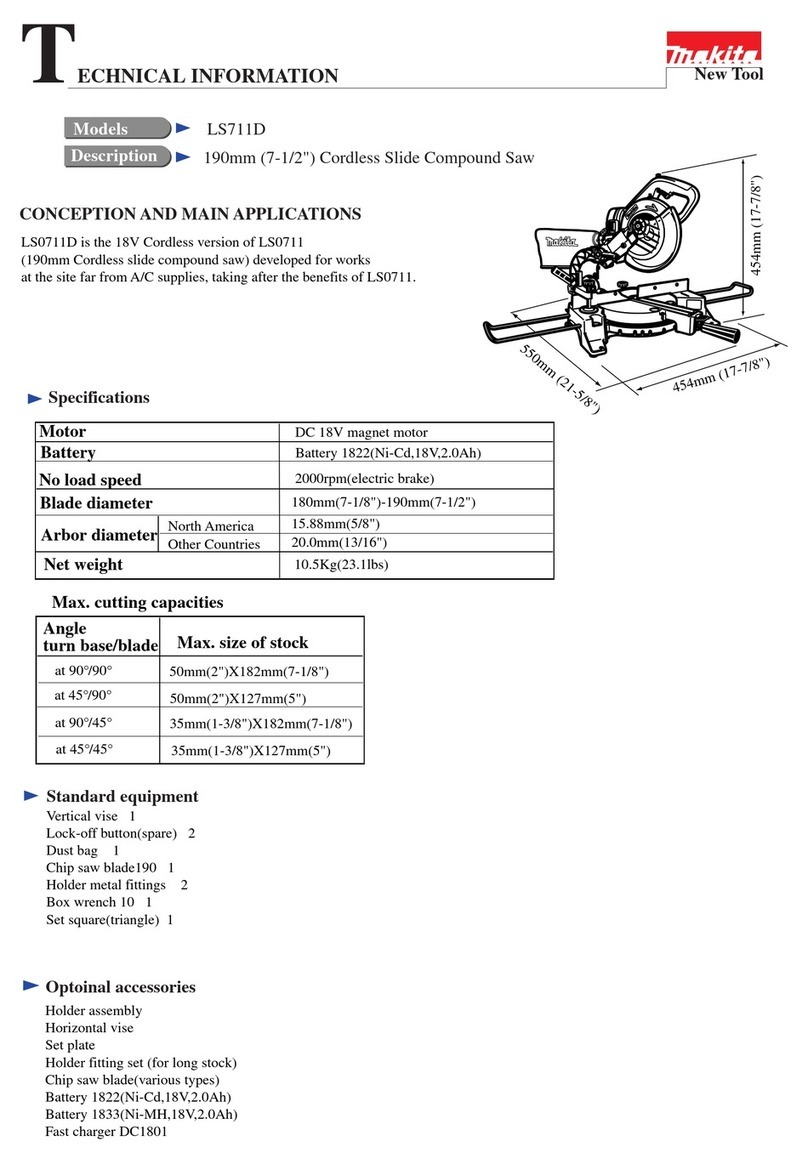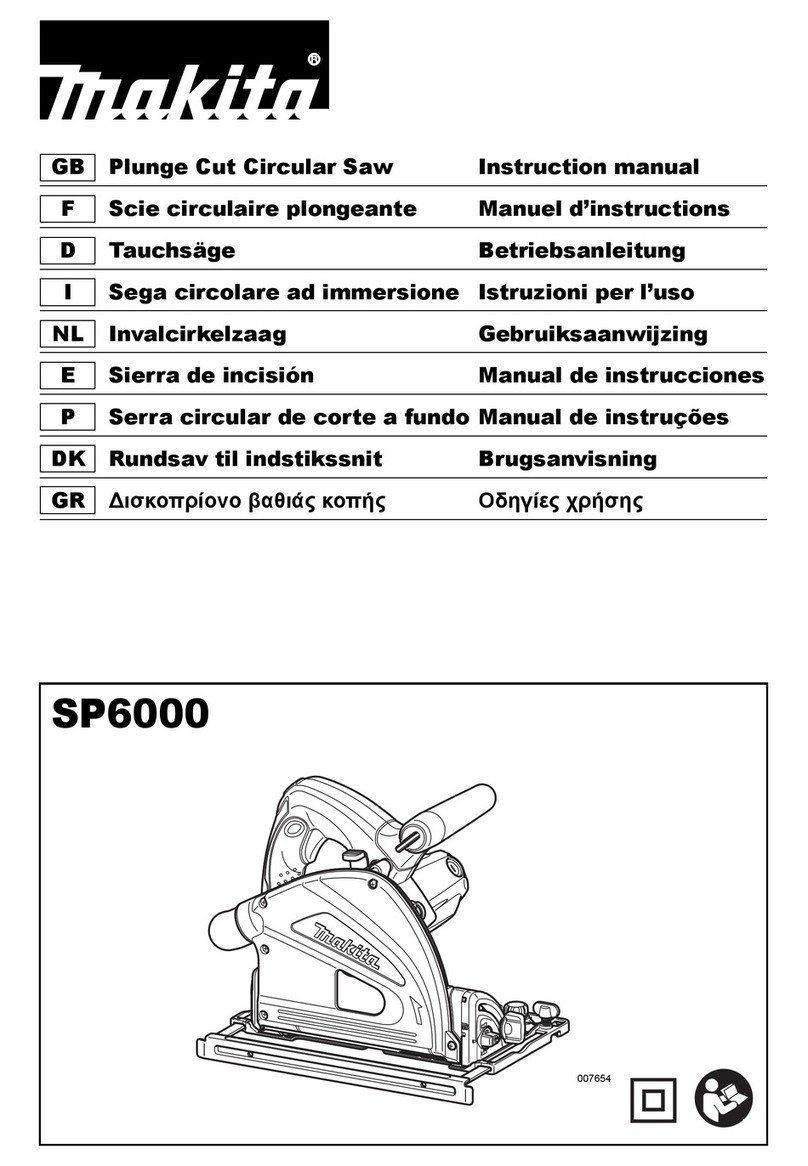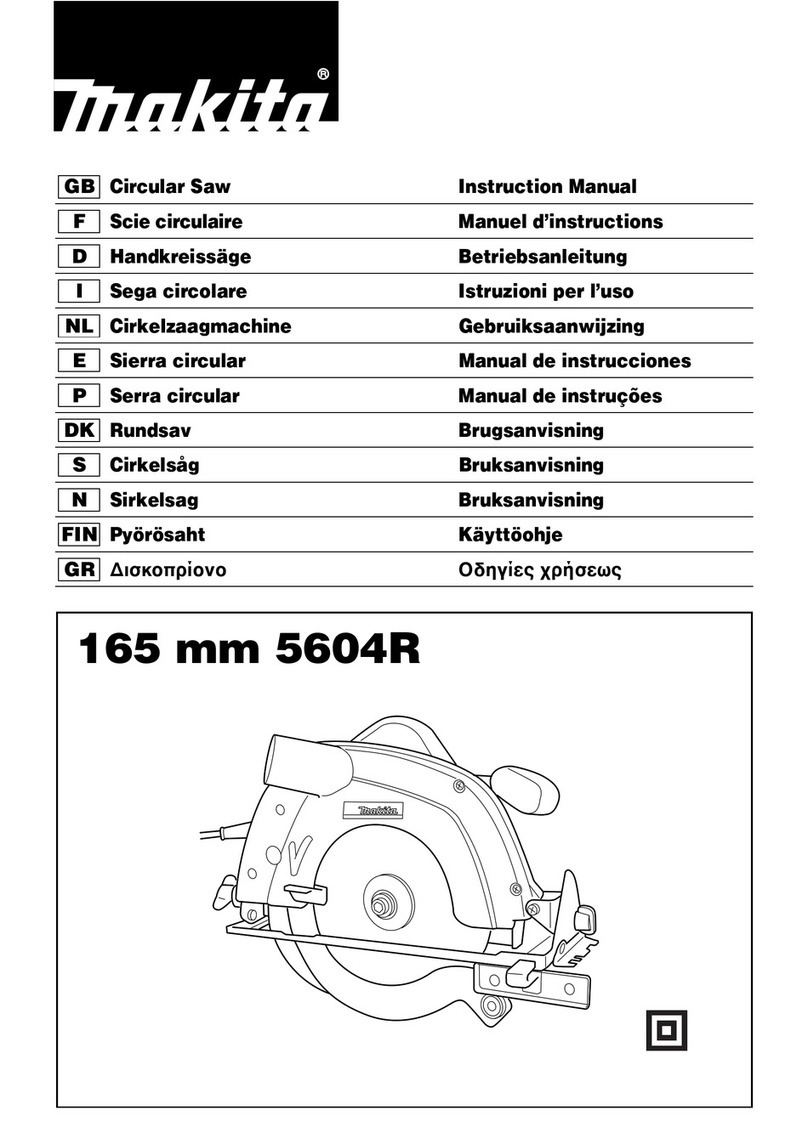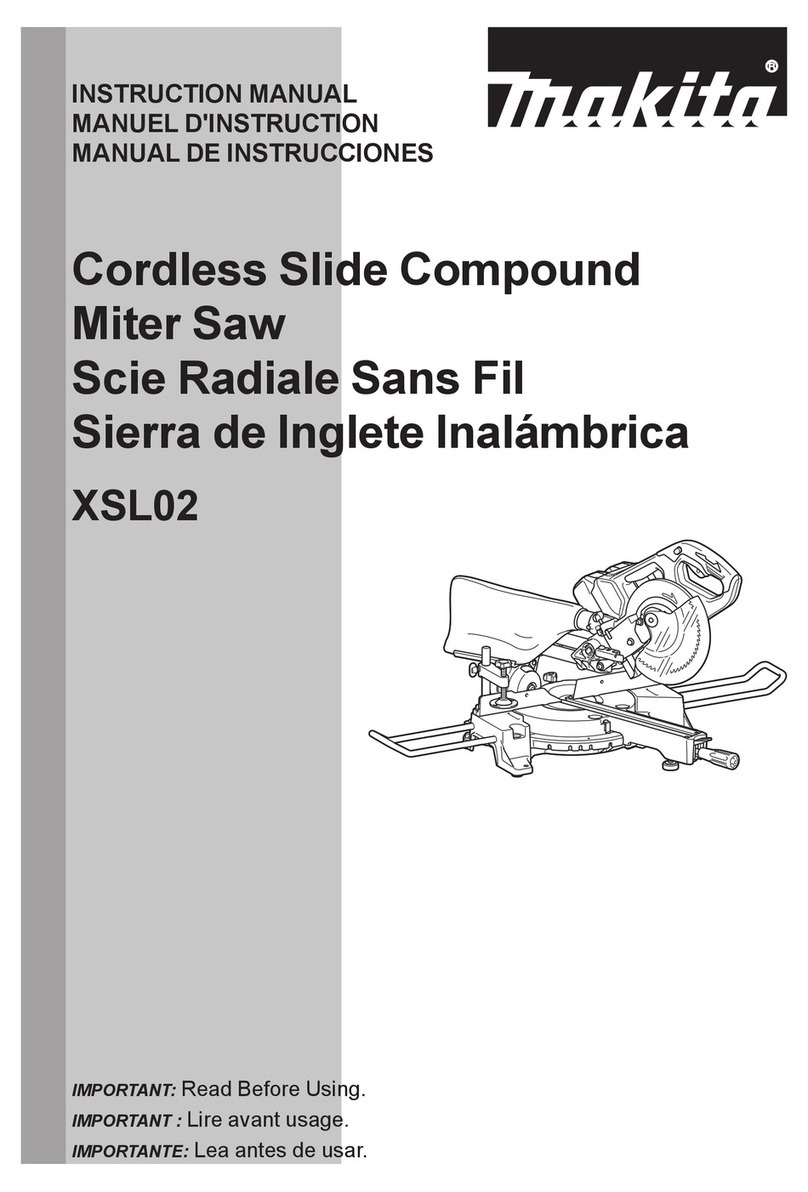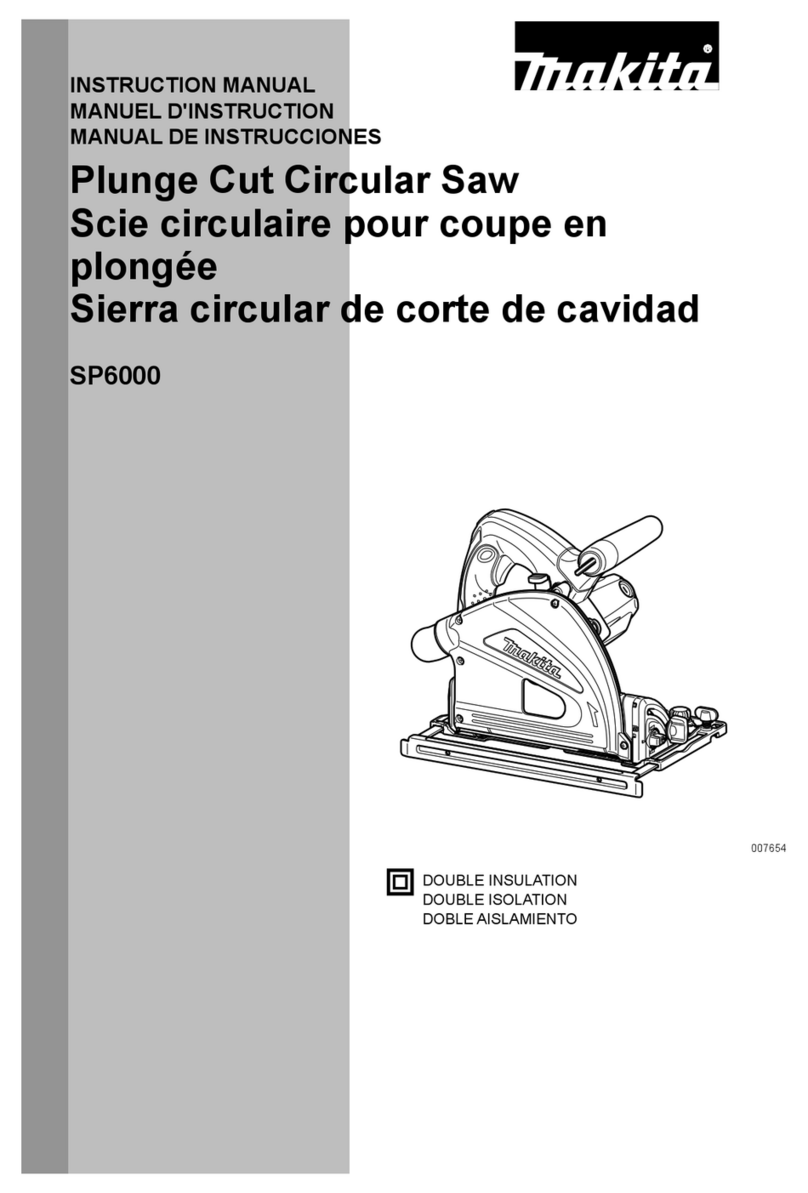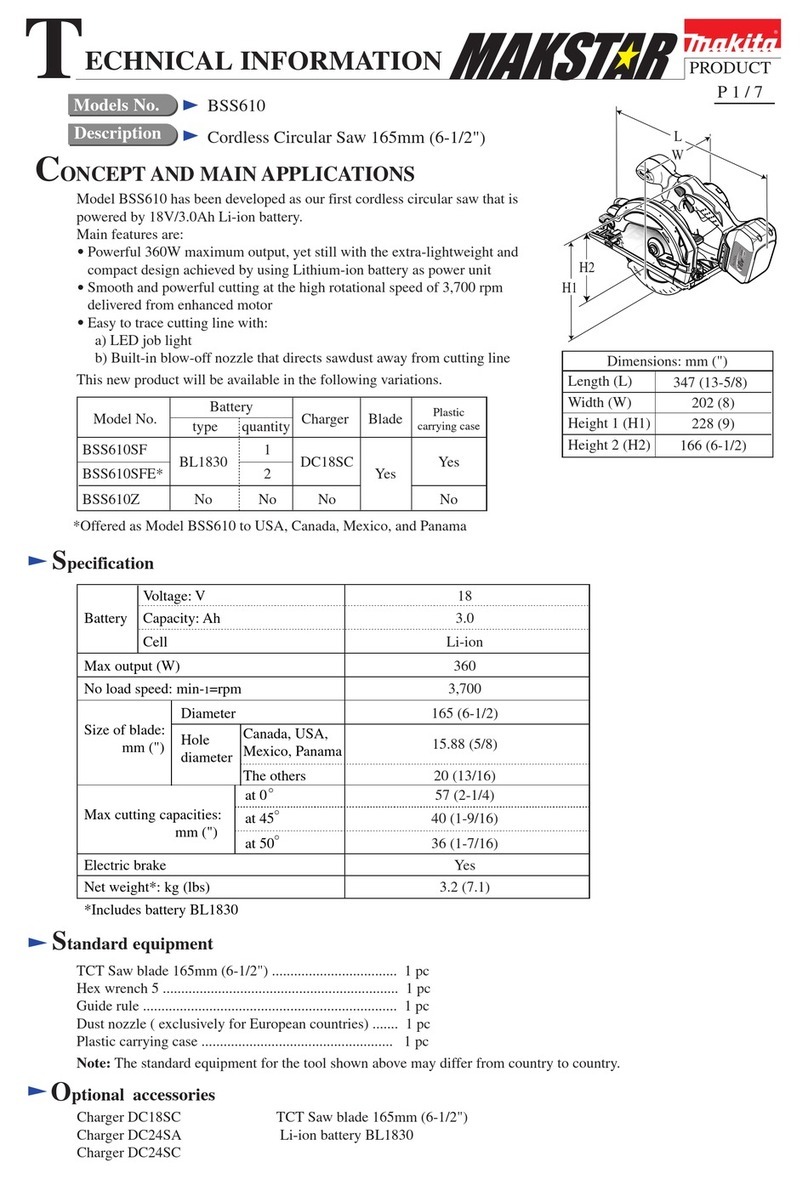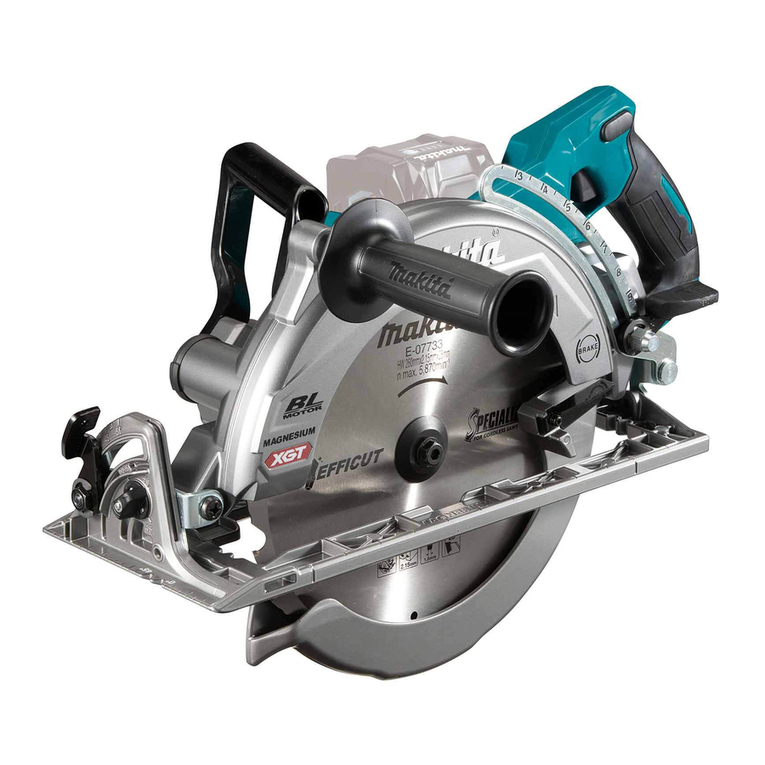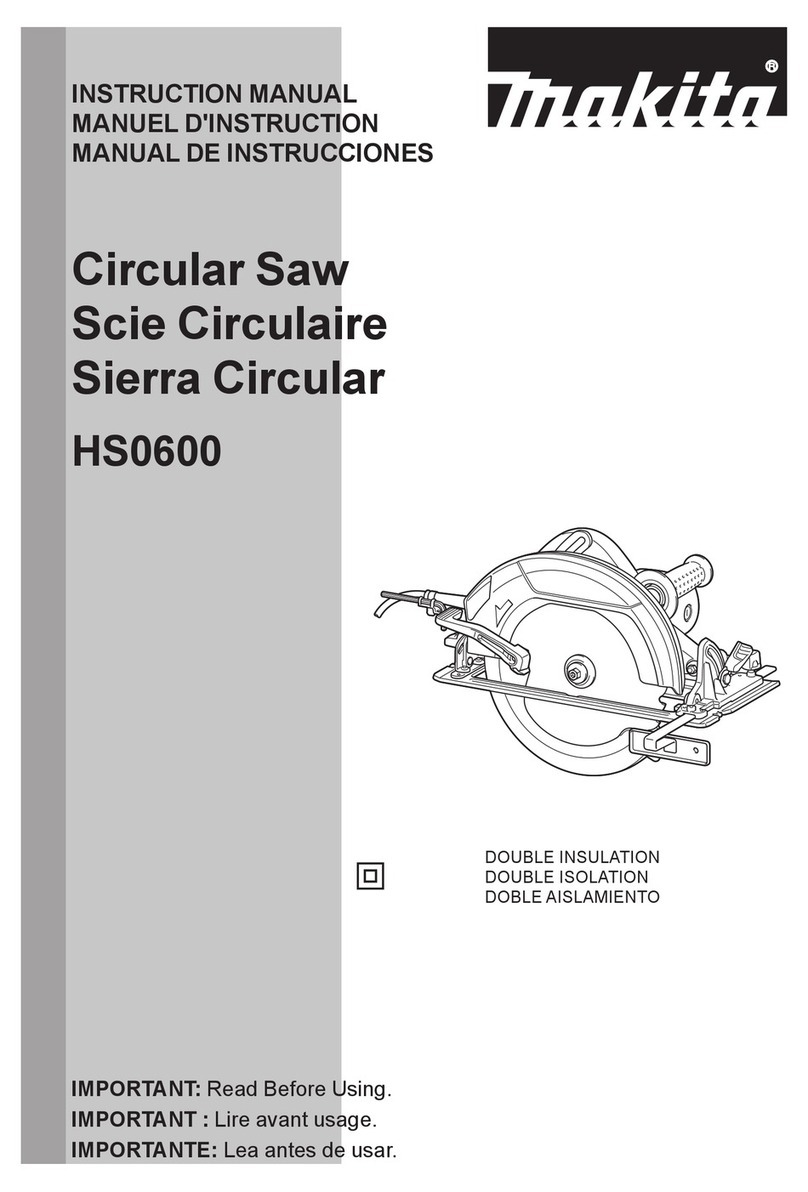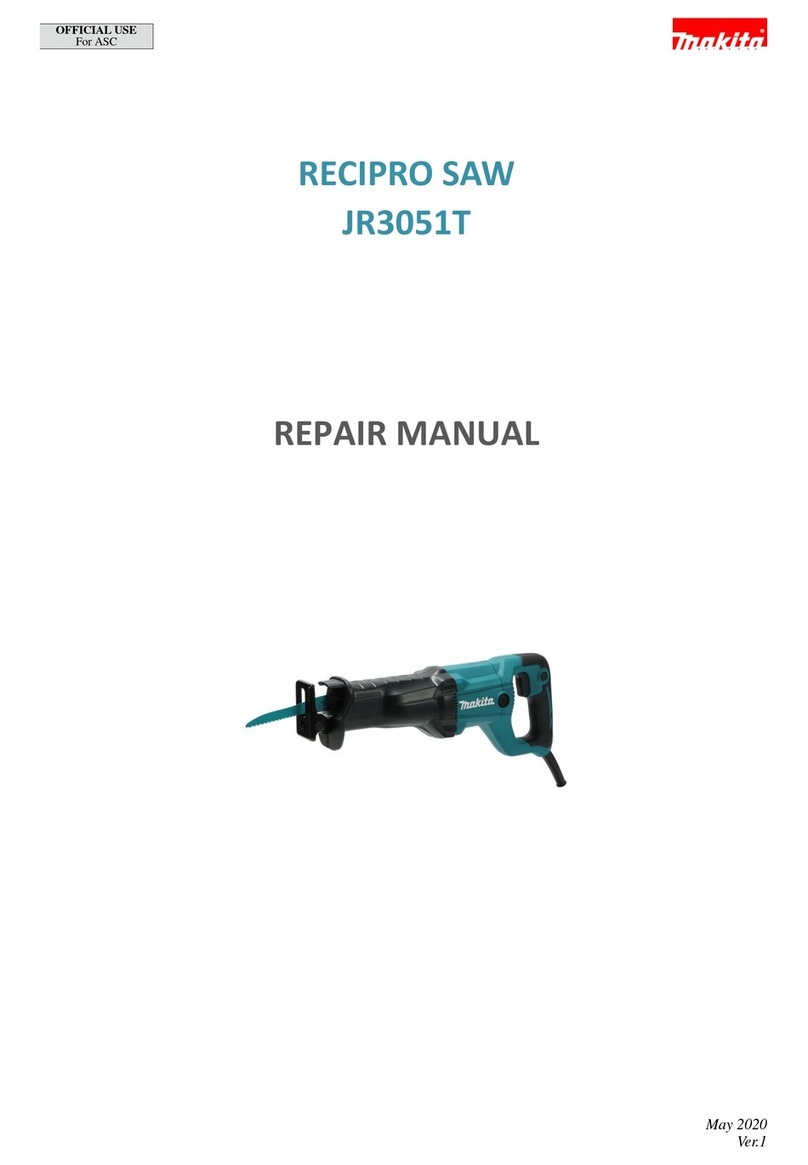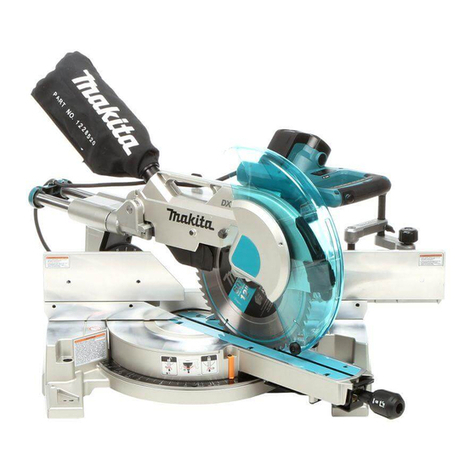5
1. Wear eye protection.
2. Don’t use the tool in presence of flam-
mable liquids or gases.
3. NEVER use the tool with an abrasive
cut-off wheel installed.
4. Check the blade carefully for cracks or
damage before operation. Replace
cracked
or damaged blade immediately.
5. Clean the spindle, flanges (especially
the installing surface) and hex nut before
installing the blade. Poor installation may
cause vibration/wobbling or slippage of
the blade.
6.
Use saw-blade guard and spreader for
every operation for which it can be used,
including all through sawing operations.
Always assemble and install the blade guard
following the step by step instructions out-
lined in this manual. Through sawing
opera-
tions are those in which the blade cuts
completely through the workpiece as in
ripping or cross cutting. NEVER use the
tool with a faulty blade guard or secure the
blade guard with a rope, string, etc. Any
irregular operation of the blade guard
should be corrected immediately.
7. Immediately reattach the guard and
spreader after completing an operation
which
requires removal of the guard.
8. Do not cut metals such as nails and
screws.Inspect for and remove all nails,
screws and other foreign matter from the
workpiece before operation.
9. Remove wrenches, cut-off pieces, etc.
from the table before the switch is turned on.
10. NEVER wear gloves during operation.
11. Keep hands out of the line of the saw
blade.
12. NEVER stand or permit anyone else to
stand in line with the path of the saw
blade.
13. Make sure the blade is not contacting
the spreader or workpiece before the
switch is turned on.
14. Before cutting an actual workpiece, let
the tool run for a while. Watch for vibration
or wobbling that could indicate poor instal-
lation or a poorly balanced blade.
15. NEVER make any adjustments while
tool is running. Disconnect tool before
making any adjustments.
16. Use a push stick when required. Push
sticks MUST be used for ripping narrow
workpieces to keep your hands and fingers
well away from the blade.
17.
Pay particular attention to instructions
for
reducing risk of KICKBACK. KICKBACK
is a sud-
den reaction to a pinched, bound or misaligned
saw blade. KICKBACK causes the ejection of
the workpiece from the tool back towards the
operator. KICKBACKS CAN LEAD TO SERI-
OUS PERSONAL INJURY. Avoid KICKBACKS
by keeping the blade sharp, by keeping the rip
fence parallel to the blade, by keeping the
spreader, antikickback pawls and blade guard
in place and operating properly, by not releas-
ing the workpiece until you have pushed it all
the way past
the blade, and by not ripping a
workpiece
that is twisted or warped or does not
have
a straight edge to guide along the
fence.
ADDITIONAL SAFETY RULES
DO NOT let comfort or familiarity with product (gained from repeated use) replace strict
adherence to table saw safety rules. If you use this tool unsafely or incorrectly, you can
suffer serious personal injury.
